- Handheld DNA devices such as miniPCR and MinION have a range of possible conservation and research uses, from catching poachers and illegal trade of wildlife to identifying species from field samples.
- Reading an organism’s genetic code through DNA sequencing is the most reliable way to identify it.
- While the technology is becoming easier to use and more reliable, it is still unfamiliar and has a few kinks.
Bulky, large, unwieldy machines are so 20th century. Technology for the next generation comes in the form of palm-sized devices that can be carried in pockets, not just backpacks. Beyond GPS, phones, and music players, devices that can miniaturize DNA amplification (copying) and sequencing (analyzing) promise to accelerate biological and medical research.
And the field research community is ready. In an assessment conducted by wildtech.mongabay.com of the technology needs of front-line conservationists and wildlife researchers, many researchers maintained that “hand-held DNA readers with up-to-date reference libraries” would be a game-changer in their work. Some have already experimented with its use in identifying species in the field.
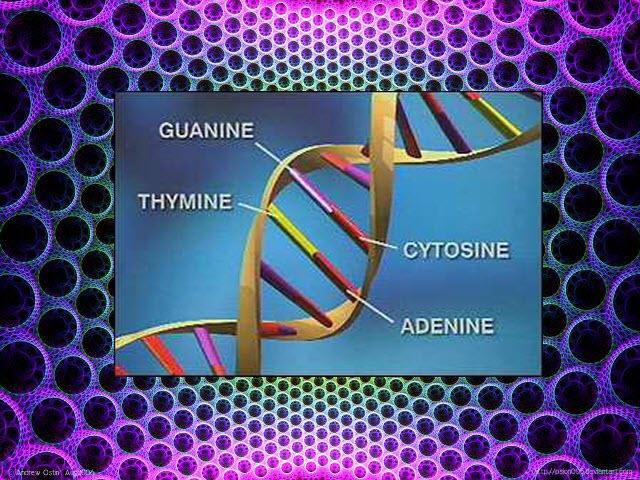
Amplify in the field
Reading the genetic code of a plant or an animal is considered the most reliable way to identify its species. The code is a sequence of molecules, called nucleotides – adenine, cytosine, guanine and thymine – that are found in a specific order, which is unique to each organism.
“DNA science can improve crops, solve crimes, protect biodiversity, and develop medical treatments,” said Dr. Sebastian Kraves, co-founder of miniPCR, in an email interview with WildTech. “Yet most of us have no access to DNA technologies because they are complex and expensive. We’ve created the DNA Discovery System to make DNA science simple and accessible for everyone, everywhere.”
The miniPCR DNA Discovery System, Kraves continued, is a DNA lab that you can take to even your remote study site. To produce sufficient DNA for analysis, however, you must first extract and amplify the selected fragment of the DNA chain to produce thousands of copies. The DNA Discovery system includes a portable PCR [polymerase chain reaction] machine to extract and amplify the DNA. It also contains a gel electrophoresis system with blue-light trans-illumination—to see whether DNA from your target species occurs in a sample and to visualize the separation of the amplified DNA fragments into categories representing, for example, species, type, or gender—and a micropipette.
Says Kraves, “It is affordable, portable, can be battery powered, and operable through smartphones and tablets.” Measuring 2 x 5 x 4 inches (5 x 13 x 10 cm) and weighing less than a pound, the miniPCR can operate in the field for up to six hours on portable rechargeable batteries.
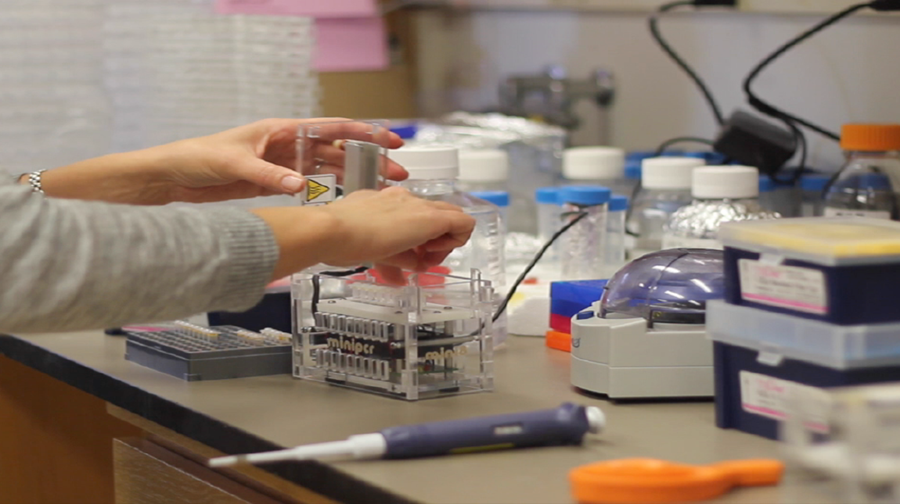
Elaine Guevara, a PhD student from Yale University using the technology to study the genetic basis of species’ traits in lemurs, explained further: “The miniPCR portion of the Discovery System is a lightweight, durable, portable thermocycler. A thermocycler (or “PCR machine”) is a standard piece of genetic lab equipment that quickly and accurately cycles among temperatures set by the user. It can also be used as heat block (holding a steady incubation temperature). It is not a DNA sequencer (which is something people often think!).”
This video explains some PCR basics:
The main use of thermocyclers, she said, is to facilitate the reactions involved in amplifying DNA molecules. “What this device makes possible is to do these things outside the lab because of its portable design.” Added Kraves, “you can [now] sample in the field and inform your sampling in real time. It also eliminates the need to remove live specimens or tissue samples from sites, allowing researchers to bring back DNA and data, reducing our footprint.”
The Discovery System can extract and process DNA from non-invasively collected samples that otherwise might be difficult to preserve and bring back to molecular labs (e.g. hair, feces, or nails collected at remote places without electricity for freezing), said Guevara. This reduces “the need to deal with potentially extensive red tape when transporting samples internationally, as original samples collected from endangered species can be heavily regulated.”
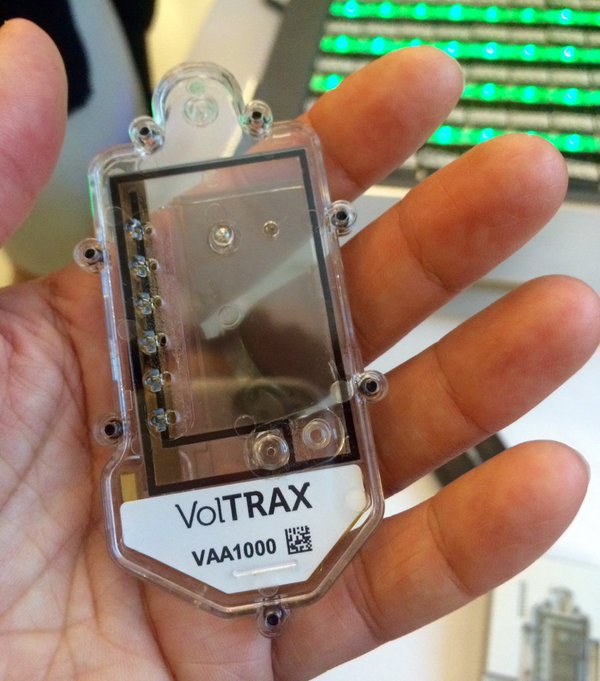
The miniPCR DNA Discovery System can also amplify a whole genome, which, as Guevara explained, “basically results in a sample of very high concentration DNA you can bring back to the lab and use for years, without ever having to re-collect from the animal again. For us it was great to knowing we would then have basically a genomic repository for each of our study animals.”
Oxford Nanopore Technologies in the UK is developing another amplification system called VolTRAX, which uses a method proposed by Dr. Jon Wetton at the Department of Genetics, University of Leicester. The VolTRAX would allow non-scientists to prepare genetic samples outside a laboratory environment. In an email to WildTech, Wetton explained that the handheld VolTRAX device will extract DNA from blood and saliva, replicate regions of the genome of interest (such as the species-specific DNA barcode gene sequences) and prepare the sample for sequencing. The device “is yet to be released for beta testing but should be in the next few months,” he added.
On the go sequencing
For the second part of the process, the sequencing, Oxford Nanopore Technologies has already developed the MinION, a handheld DNA sequencer that runs off a USB cable attached to a laptop. Its weight (87 grams) and size (10 x 2 x 3 cm) make it easily transportable. Wetton, who proposed the method, said, “The MinION is undergoing beta testing by a number of laboratories as part of the MinION Access Program, and users are testing a huge range of different applications – sequencing Ebola, looking at water quality etc.”
The VolTRAX-MinION combination aims to fully automate DNA analysis, from identifying and amplifying a sample of blood or tissue, to determining the base-pair sequence, to comparing the analysis results in real time with a reference database of species-specific barcode gene sequences. When the pair of devices is fully developed, says Wetton, “it should be possible to go from a bloodstain to a sequenced barcode gene in about one hour.”
Dr. Dirk Steinke, senior researcher and associate director of education and outreach at the University of Guelph, concurred that the MinION is a big leap forward to real portable sequencing technology. “I am sure it won’t take long, and all a researcher in the field will need is a laptop, a MinION docked with a VolTRAX, and species identification can be done on the spot.”
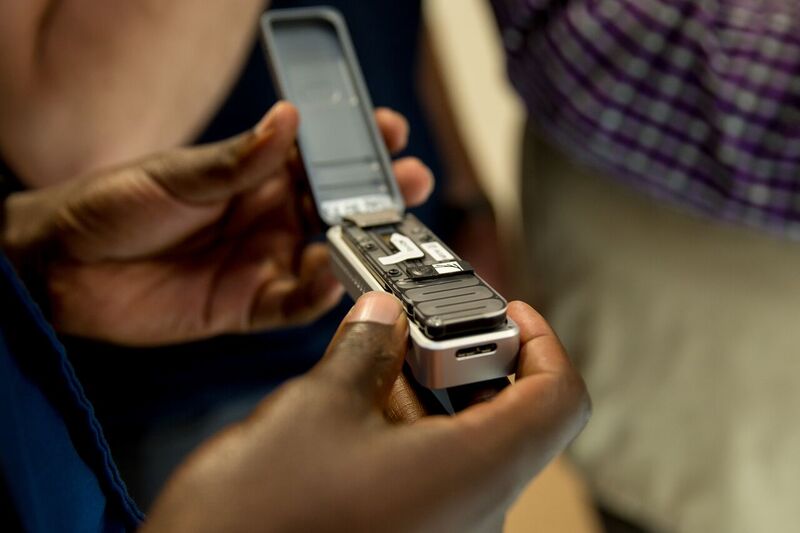
Decreasing processing and analysis costs
While commercialization details of Nanopore sequencing are yet to be finalized, the company intends to make it available at an affordable price for conservation work, Wetton stated in the email.
For its part, the miniPCR unit costs less than US $650, said Guevara, while the gel electrophoresis system adds another $400. “The solar panel and battery I used to power it were each about $200, so the entire equipment “set up” came in under $1,000. The reagents [needed to perform the analyses] can be somewhat pricy. Chelex extractions are pretty cheap, and PCR reagents are not terribly expensive. The shelf stable whole genome amplification kit I used with it cost around $200 for 24 samples, so a little over $8/sample.”
Combining technologies for conservation
When Wetton was developing lab-based species identification methods for a previous job with the UK government Forensic Science Service, he realized that although very sensitive and accurate, the lab-based species ID test took at least a day and used expensive equipment. “For a test to be widely used in wildlife crime investigation, it needs to be performed in about an hour and in the field at the scene of a suspected wildlife crime.” Hence, his decision to develop the MinION DNA sequencer, a Wildlife Crime Tech Challenge prizewinner.
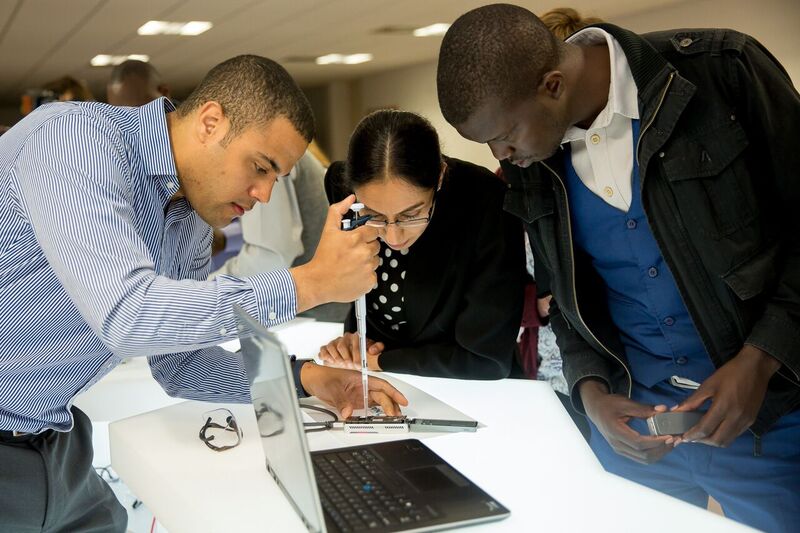
Several genomic databases for animal DNA are publicly available via National Center for Biotechnology Information and other organizations. According to Wetton, MinION will use GENBANK, an internet resource with mitochondrial barcode gene DNA sequences from a significant proportion of protected CITES species, to help identify the species of DNA samples. The similar Barcode of Life DataSystem, said Steinke, holds reference barcodes for about 460,000 animal species.
“Once the VolTRAX is coupled with the MinION,” Wetton added, “the system could be used to sequence barcode genes in the field….The VolTRAX will work best on substrates from which DNA is easy to extract, e.g. fluid traces such as bloodstains or saliva, but with some work back in the laboratory, we would be able to prepare DNA from other types of samples, [such as scat, hair, skin, and nails]. We will target poaching cases first of all, as bloodstains are usually found on suspected poachers’ possessions.”
The combination of the VolTRAX sample preparation device and the MinION sequencer can “allow immediate action to be taken if a suspected poacher is stopped while acting suspiciously in a national park; it could also be used to identify the origins of bushmeat on sale at a market or to test caviar shipments going through a customs post.” The idea is to disrupt illegal activity while causing minimal inconvenience to legitimate trade.
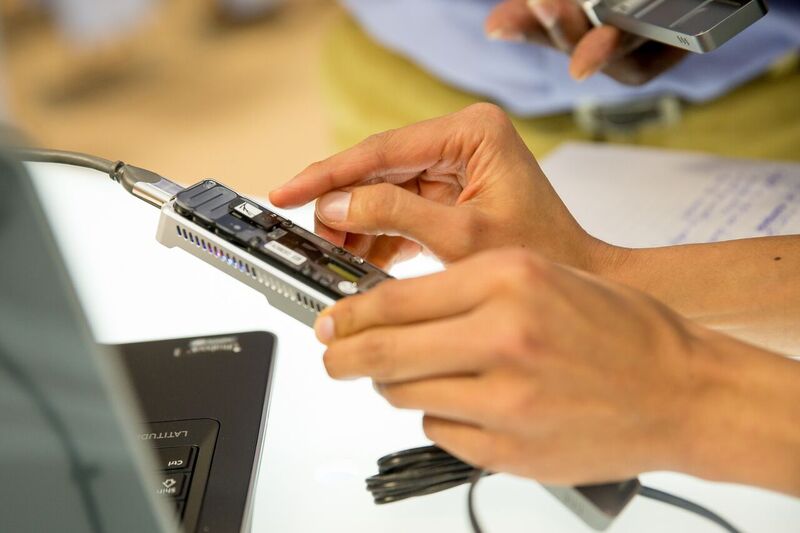
In a 2014 review of the MinION, Mikheyev and Tin found relatively high error rates in reading DNA, but they foresee additional applications: “For instance, mobile laboratories could conduct DNA associated with disease outbreaks in the field, or teams deployed at a remote field station could use molecular barcoding to track endangered species.”
Keeping complicated technology accessible
To operate a PCR machine, such as the miniPCR, one needs some basic molecular biology training, a familiarity with DNA extraction, polymerase chain reaction, and gel electrophoresis.
“There is a bit of a learning curve, especially when it comes to the analysis/interpretation of the data and some basic knowledge on how to prepare samples to be loaded onto the device. The sample prep kits also require a very basic lab setup,” Steinke said. The aim for the MinION is a device that will be useable with minimal training, and the laptop software will provide a species identification, Wetton stated.
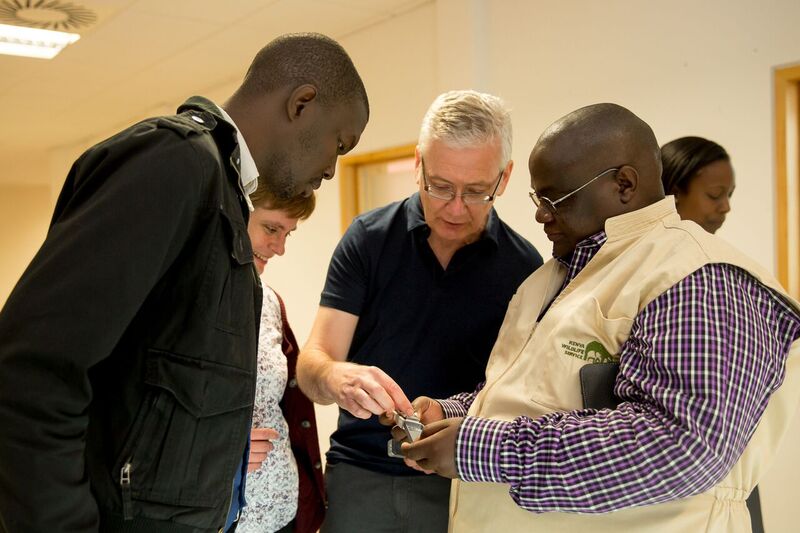
So why isn’t this technology ubiquitous?
Kraves suggested several barriers, including the multiplicity of platforms, operational difficulties in the field, and performance. “We’ve focused on PCR in part because it’s robust and the method of choice when working in labs. It’s just lacked a portable version that is fully compatible with the assays scientists run in their labs.”
Operational difficulties include the hassles of preparing samples for DNA extraction analysis when working remotely, which Kraves added are essential steps, just not very well addressed in current versions of the technology. But, he added, solutions are underway.
Guevara, who’s used this technology in the field, says if there is one thing she’d like to change about the miniPCR, it is the number of samples it processes. “You can only process eight samples at a time using it. It would be great if you could do a few more.”
Kraves added that the performance of several platforms hasn’t lived up to expectations, but they’re making progress in latest iterations.
“Then again, with a fundamentally new technology, anything seems possible,” (Mikheyev and Tin, 2014).
To stay up to date with the latest WildTech articles and news, follow us on Facebook and Twitter.
References:
Mikheyev, A. S. and Tin, M. M. Y. (2014) A first look at the Oxford Nanopore MinION sequencer; Molecular Ecology Resources 14, 1097-1102.

